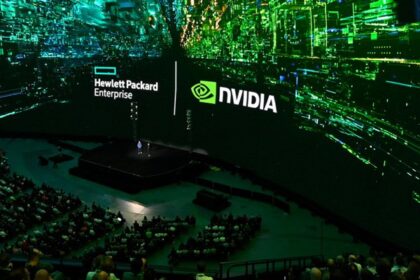In the ever-evolving landscape of financial markets, where precision and speed have a huge impact on results, advancements in technology continue to reshape the way trading strategies are approached. Among the endless improvements in technology, artificial intelligence (AI) continues to present its case as something that can help inform investment strategies, not only in the pre-trade cycle, but increasingly in execution.
AI has become a part of our daily lives, with platforms such as ChatGPT being increasingly used by anyone with access to a computer. Looking through the lens of fixed income, a potential new era of precision, efficiency and insight is set to dawn as traditional workflows become paired with the boundless capabilities of AI. Already, the technology has begun to redefine how the industry approaches trading strategies, risk assessment and portfolio management.
A paradigm shift
“AI’s integration into fixed income trading is not just a mere addition; it’s a paradigm shift,” says Eric Heleine, head of buy-side trading desk at Groupama Asset Management. “By emphasising data integration, real-time analysis, predictive modelling, and advanced computational techniques, AI is setting the stage for a more informed, efficient, and profitable trading future.”
The use of AI can help traders move away from grid based and structured auto-execution rules. Instead allowing them to become more agile and data dependent when it comes to execution strategies for specific orders.
While AI is currently being used for the automated routing of simpler trades and smaller orders, this can be taken further still. For example, to determine which broker should be used according to an order’s level of difficulty using real-time data including axes, trades, wire time behaviour and related markets.
“The next step would be broker selection: If we balance information leakage against price discovery and only ask a limited set of counterparts, the key question becomes who to ask,” says Eric Boess, global head of trading at Allianz Global Investors. “Experienced traders do all this naturally, but machines are faster in digesting data and turning it into actionable information.”
Real-time analysis in the fast-paced world of trading becomes vital. As new market data sets continue to emerge, AI is able to analyse that data, ensuring that traders are ahead of the curve and able to adjust their strategies alongside everchanging market dynamics. The use of AI allows trades to be executed autonomously while also adapting to market conditions and developing from past trading scenarios.
“This not only streamlines the trading process but also minimises human errors, leading to more consistent and profitable outcomes,” adds Heleine. “AI’s ability to analyse past trading patterns and forecast future liquidity conditions is invaluable, especially in a market known for its occasional illiquidity. Such predictive insights ensure traders can time their trades optimally, mitigating risks and maximising returns.”
Execution
The role AI plays in fixed income is proving to be more and more impactful, especially in the execution process. AI has the ability to amplify the ways in which traders operate, allowing them to scale their processes and make complex decisions in a more informed way. The technology, which has somewhat evolved from automation in the pre-trade stage, where data is used to create rules for low-touch trading, and is shifting towards more complex high-touch trades.
“We now have a sea of data, the question is how you use AI to deal with and manage that sea of data in intelligent ways to bring the most important things up to the top and how do you deal with attention in the sea of data,” notes Chris Bruner, chief product officer at Tradeweb.
“To execution, which is more concrete, where traders need to pay the lowest cost and have the best liqudity across a wide swathe of trading, AI is able to lower costs, scale humans and make the process much more efficient so you can do more with less and you can handle lots of market environments. Broadly, it’s going to affect pretty much every part of fixed income – it’s just a matter of how.”
AI is able to assist in decision making processes when determining the timing of a trade, what dealers to use and all the other parameters that go into making a trading decision. These tools are able to optimise the decision that traders are making, but AI is only as good as the data that goes into it.
“These models are very good at looking at historical information with a level of statistical significance, giving an estimation of what might happen in the future based on all the different parameters that one looks at right now,” says Lisa Schirf, global head of data and Analytics at Tradeweb.
“They’re very good at doing it in a way where humans simply can’t take that much information into account. Liquidity is certainly an area that can be predicted whether it’s for security or overall market.”
Targeting liquidity is an ever-important part of a trader’s role and AI can help assist in this process. However, liquidity is subjective and can mean different things to different people. Historically, metrics have been created that are fairly linear but inherently, liquidity tends to be feature based and dynamic in markets.
“The latest AI model approaches are really well suited to help humans understand what liquidity conditions are and how they rapidly change, and then use that information to execute within changing markets,” adds Bruner. “There is this inherent non-linear, picking up the patterns and features in large, complex multidimensional data sets, where AI can be really well suited to helping people understand liquidity.”
In fixed income, a large instrument universe with sparse data exists where one may not see much observable liquidity on a certain ISIN. However, when you start to look at a collection of instruments, axes, real quotes or trades, AI is able to provide more observable prices.
“With some of these machine learning or AI models, you can start to use AI to help you to impute where certain pricing or where liquidity should be, based off a broader set of data,” notes Chris Murphy, chief executive of Ediphy.
“The optimal right now is man and machine working together in tandem. We’re going to see an acceleration of people deploying machine learning algorithms to assist in that process. All of these models are only as good as the data they’re trained on. Because traditionally in fixed income, there has been a paucity of real high-quality data that you can rely on, you need to be a little bit more careful about whether the model is sitting on top of weak foundations.”
The importance of data
In fixed income, a growing number of machine learning techniques are required to help aggregate and make sense of the very broad and quite disparate set of data which exists in fixed income markets.
What AI enables is the ability to aggregate – in real-time – data sets and to make predictions about where a bond is likely to trade and how much liquidity there is likely to be in the marketplace. AI is able to produce signals which can help inform decision points for traders, with data essentially being a vital part of the decision-making process in the execution workflow.
“What we’re able to do with AI is feed into the model a very, very broad set of data points – including data points that may not be about the specific bond that we’re trying to solve for,” says Gareth Coltman, global head of trading automation at MarketAxess.
“The machine learning model can then iterate and select which of those data features are the most reliable signals of liquidity when they’re tested against the market. What we’re seeing today is very broad adoption of these machine learning tools, and that’s because their ability to predict reliably and consistently is really benefiting the traders that are using them.”
The role of passive inflows and ETFs
The evolution of the fixed income ETF space has brought more automated market makers into the space, due to the ETF market based around equity market structure. This has seen fixed income markets translate more of their activity in the ETF market into the single lane market, allowing the ability to stream firm pricing on single names and respond to RFQs in a more automated fashion.
“It’s really raising the bar for all of the dealers out there to say look, if you’re not able to algorithmically price a certain part of the credit market then you’re not going to be fast enough to be able to respond to RFQ inquiries,” adds Murphy. “Someone else is going to respond quicker, with a more accurate price and your market share is going to be eroded. Via an indirect mechanism, the growth in the ETF market and growth in passive is actually changing the rules of the game and raising the table stakes for you to be in the flow credit space.”
Managing high levels of flow
In terms of helping larger firms manage flow, AI can be extremely useful in detecting outliers by monitoring previous history of how traders approach their accounts including when certain inflows come in and how much is traded. If something were to go wrong in the execution process, AI is able to notify traders that something is not right and can help stop that specific trade from executing.
“AI is essential for this problem domain because it’s difficult to capture all possible outliers using simple rules, but AI can even spot complex outliers in seemingly conforming individual data units that collectively represent an outlier,” notes Miles Kumaresan, founder and chief executive of Wavelabs.
However, Kumaresan re-emphasises the need for AI to be based on accurate, useful data.
“A neural network is just a sophisticated statistical engine. Its magic comes from its ability to identify levels of abstract relationships between a set of inputs and the associated target dataset. AI’s performance is not so much defined by the large amount of data it uses, but about learning from the representative dataset. Finding the representative dataset is a challenging task and is essential for the AI’s prediction accuracy, and to avoid unwanted biases and surprises.”
For firms managing large flows, automation solutions are essential to help desks execute low touch flow. AI is able to assist traders when assessing whether resources need to go into a specific trade and whether it is something that a human trader needs to see. However, it is important that appropriate barriers are set to make sure traders are able to catch everything that needs human intervention.
“You don’t want to have situations where a trade that needed manual attention has gone through for automation because the rules are too simplistic. You also don’t maximise your opportunities for automation using that type of rigid, parameter-based approach,” adds Coltman.
“AI can be used to make a better, more finely tuned decision about what needs to end up with a human trader, and that really is going to allow you to maximise how much benefit you are getting from automation and able to tweak that efficiency to the maximum possible level.”
The evolving role of the trader
As with any new introduction and evolution to the trading desk, things have to adapt. AI has the potential to elevate the trading process, reduce the amount time spent on trades that could be automated and also help traders make more informed trading decisions. However, the role of the human trader remains vital, as AI has not reached a point where trading flows do not require managing and monitoring.
Financial markets, as we see repeatedly, are very complex. Traders and market practitioners still hold an edge by being able to provide a real view on context. Although the role of the trader is shifting, AI is far from being a human replacement.
AI requires a high degree of care when implemented. However, the benefits that AI can provide to fixed income markets should be taken into account when developing new trading strategies.



